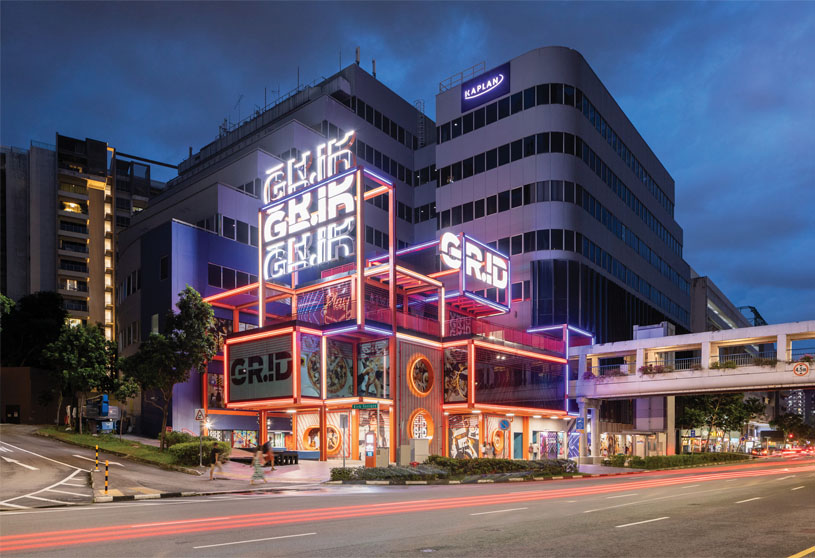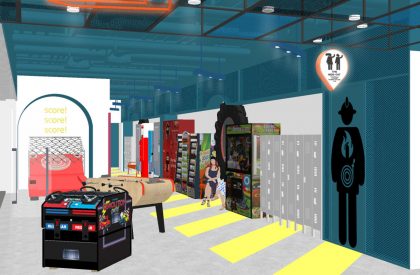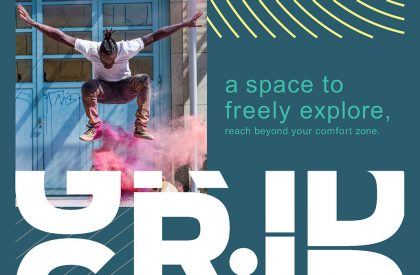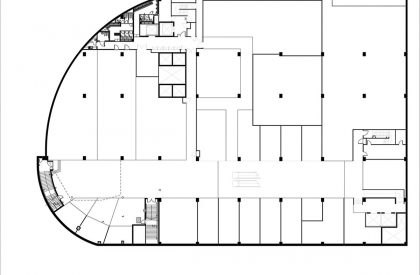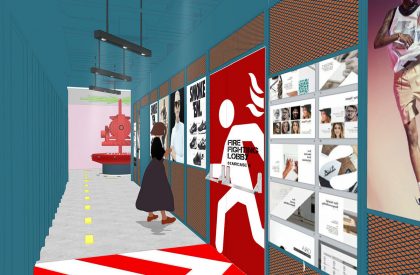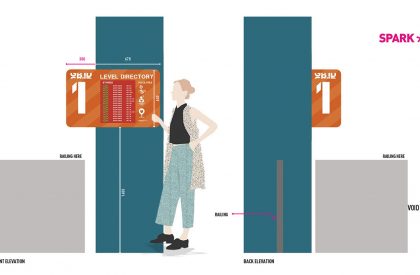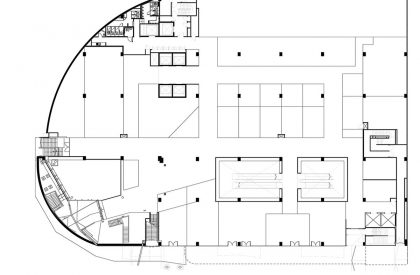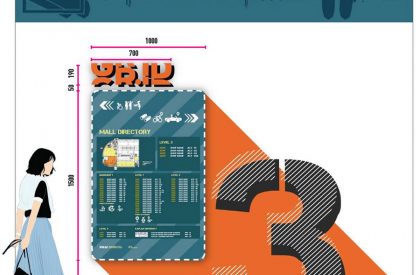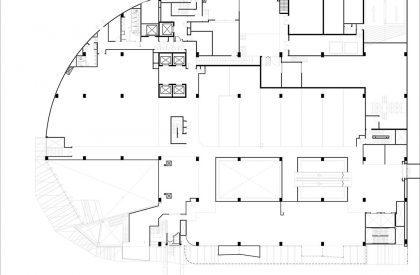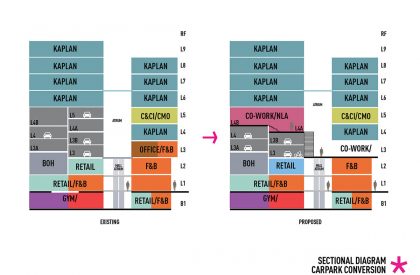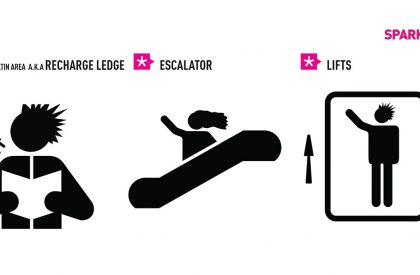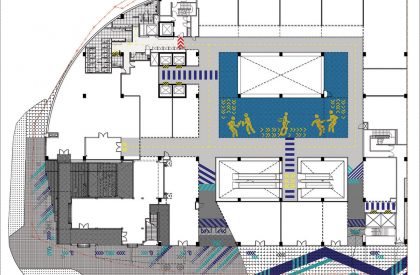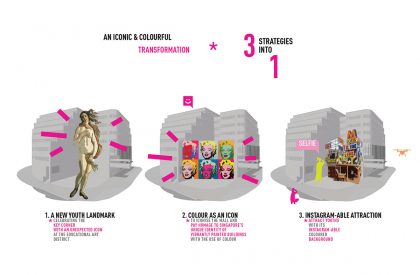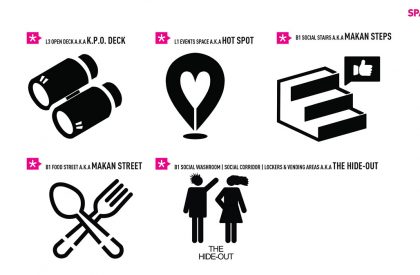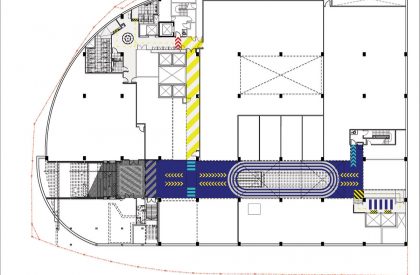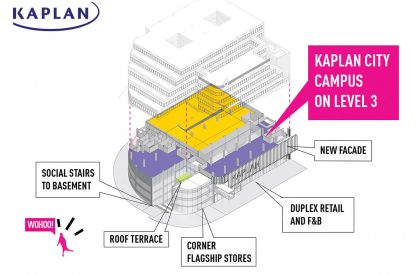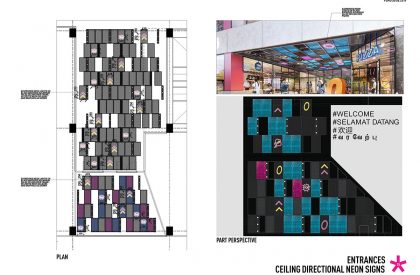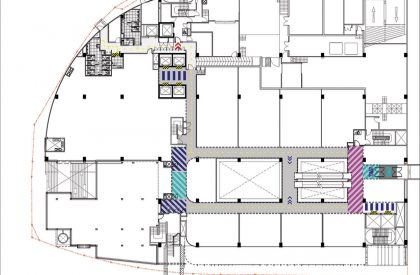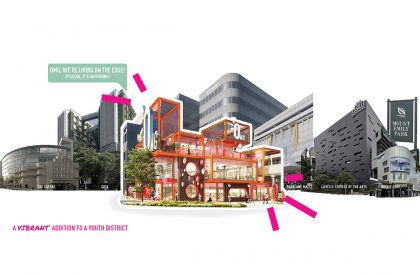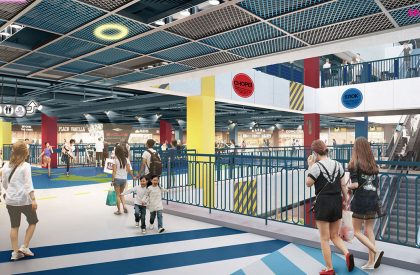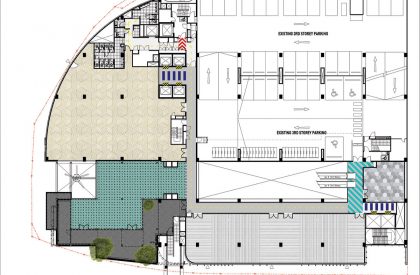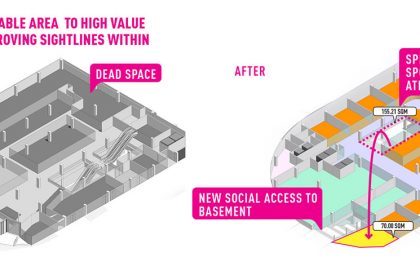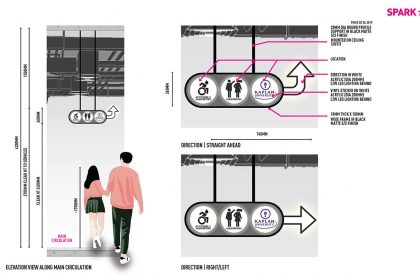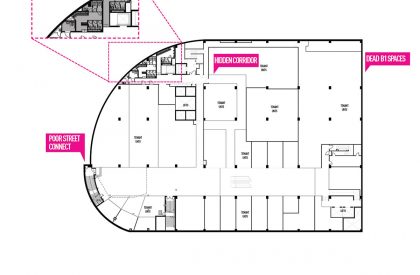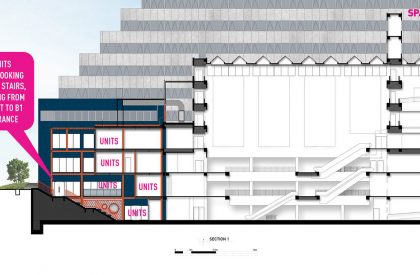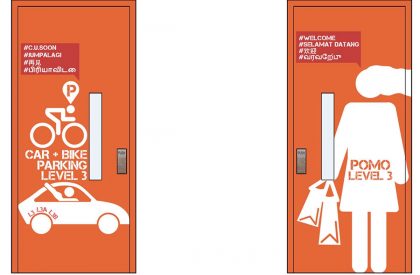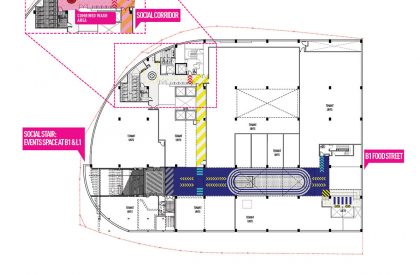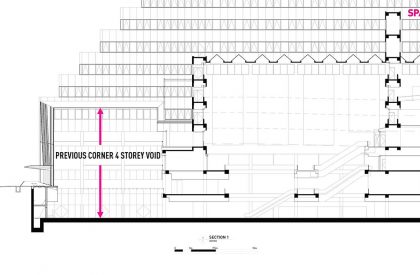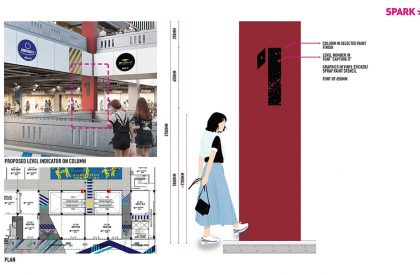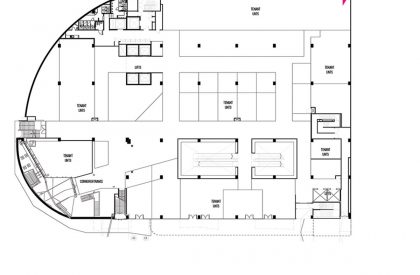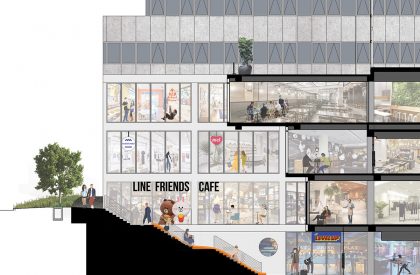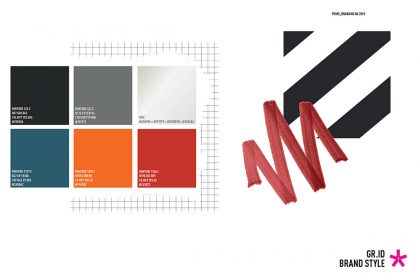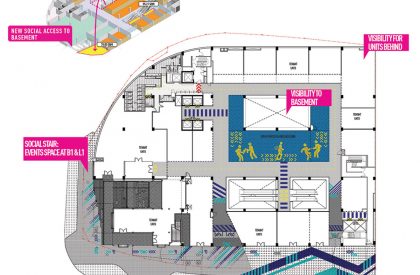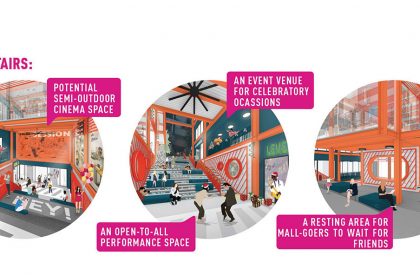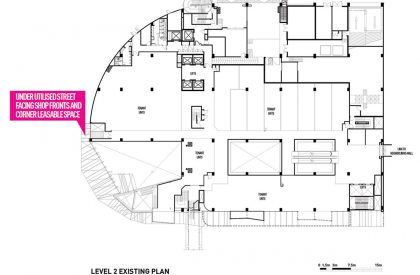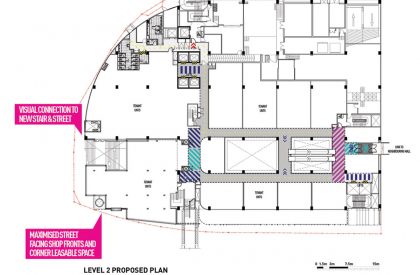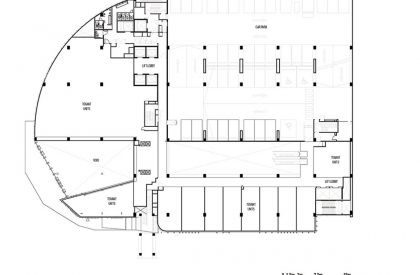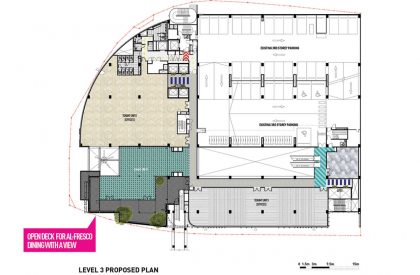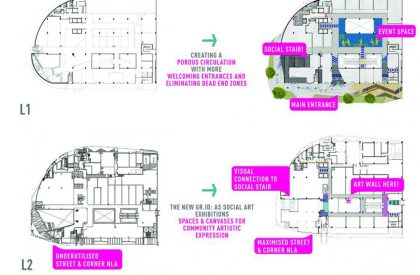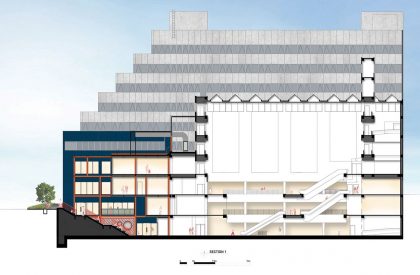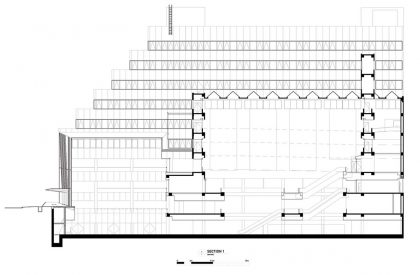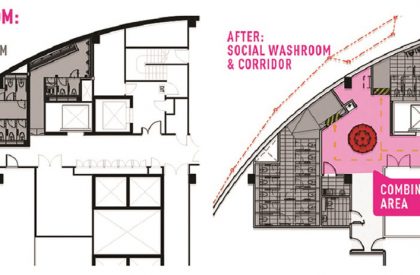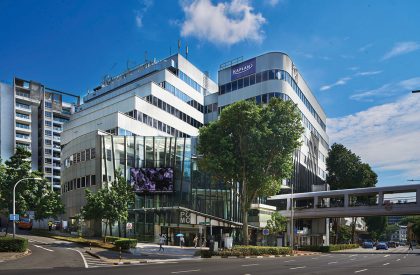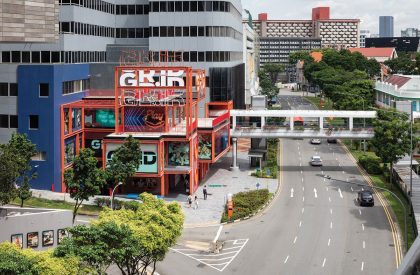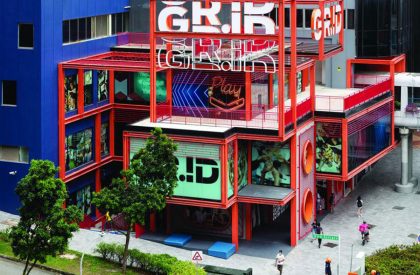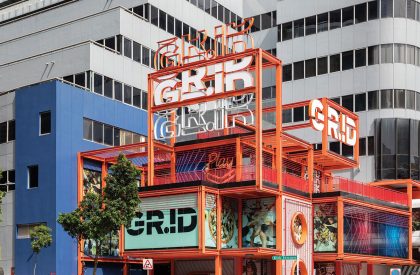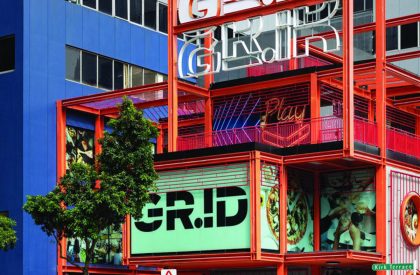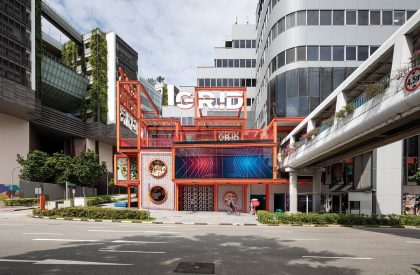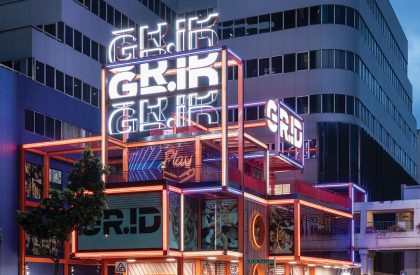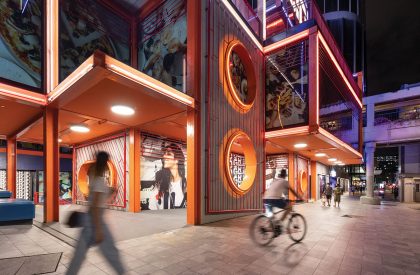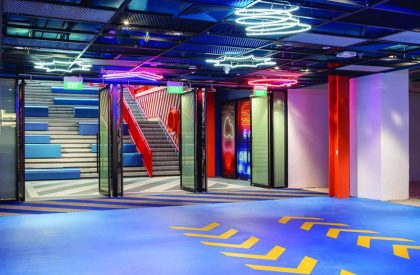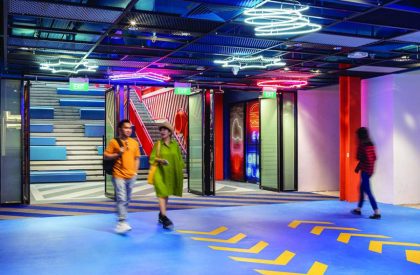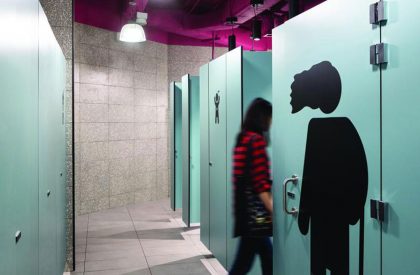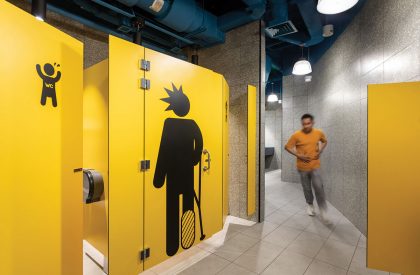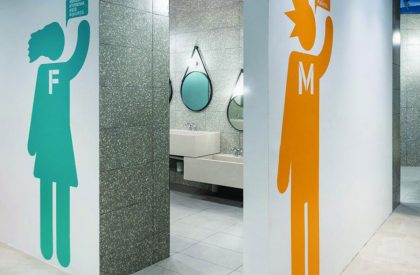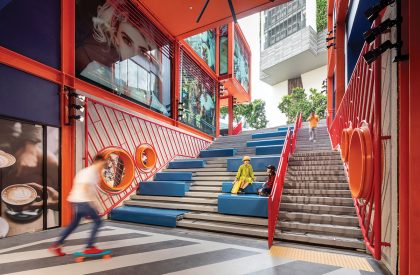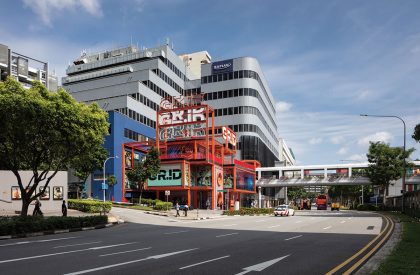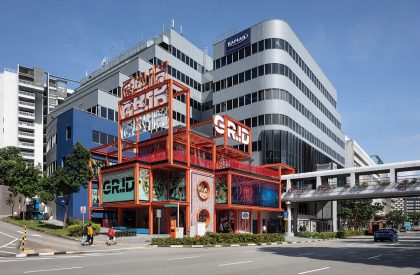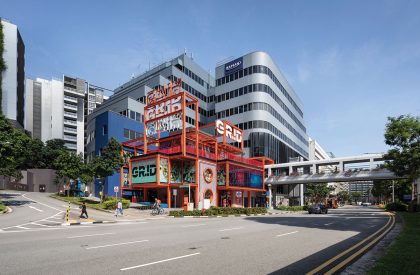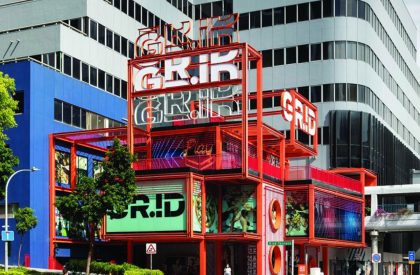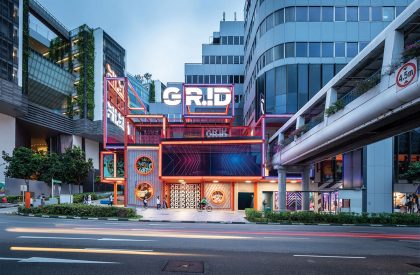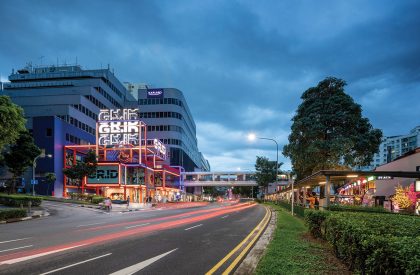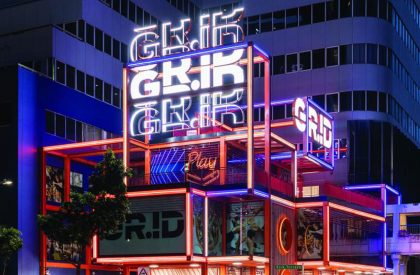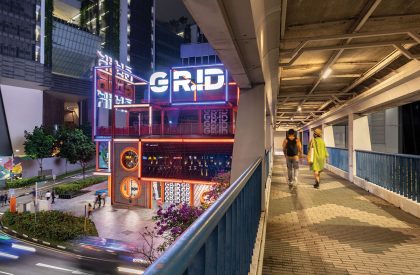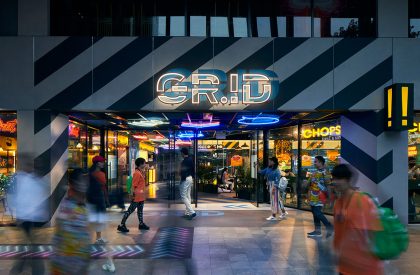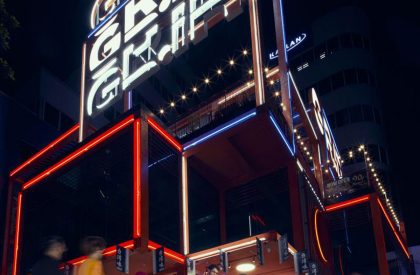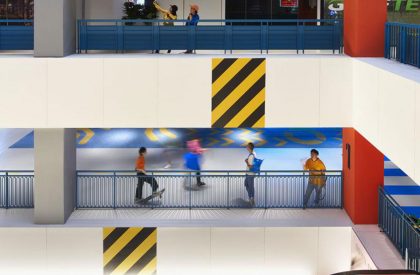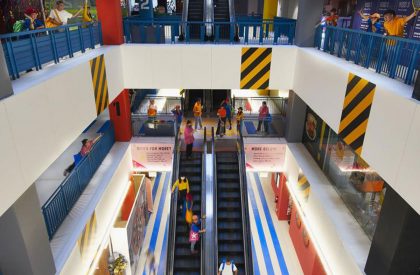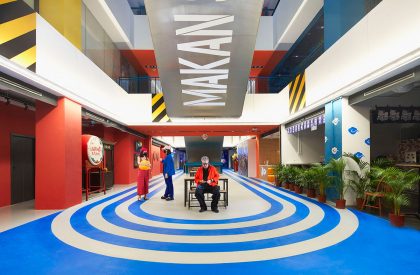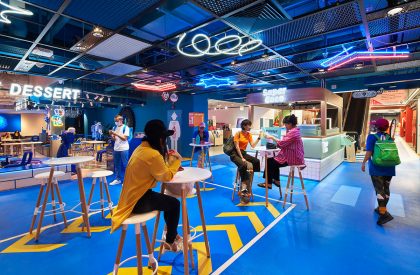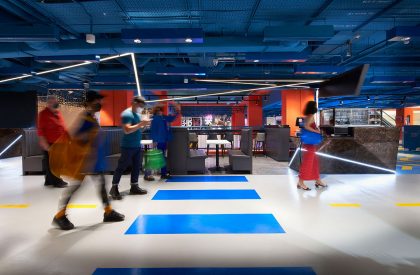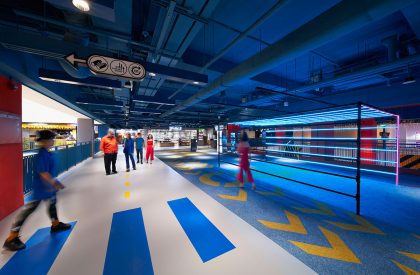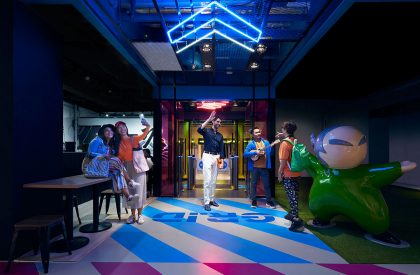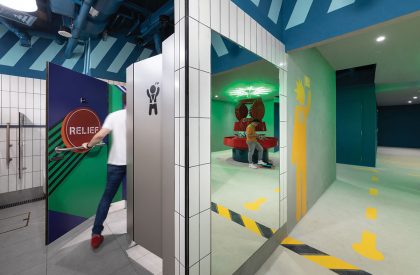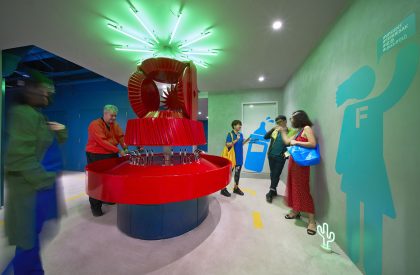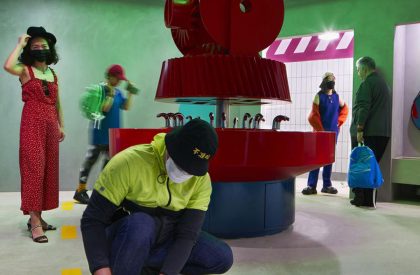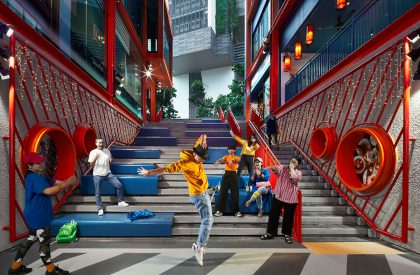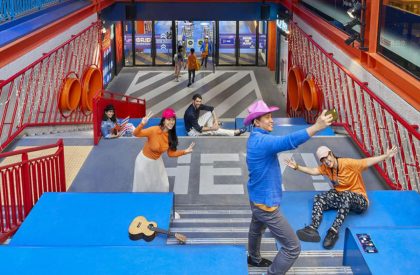Excerpt: GRiD is a mall and an education hub designed by the architectural firm SPARK. GRiD sits at the heart of Singapore’s Arts District, sandwiched between SOTA (School of the Arts) and 2 of Singapore’s older generation of shopping malls, Park Lane and Peace Centre. GRiD is an excellent example of a positive transformation of a failing building into a socially-focused youth retail and education hub for the community. The upgrading work is centred on increasing asset value through social interaction, improved accessibility and the celebration of self and society.
Project Description
[Text as submitted by Architect] SPARK is renowned for the innovative transformation of buildings such as Clarke Quay and Starhill Gallery. GRiD is the next chapter in this narrative. A youth-focused mall and education hub sits at the heart of Singapore’s Selegie Arts District. It is sandwiched between the adjacent School of the Arts (SOTA) and several time-worn shopping malls. GRiD is an excellent example of the vibrant retrofitting of an existing building that extends its community relevance through positive reuse rather than wholesale demolition and re-construction.
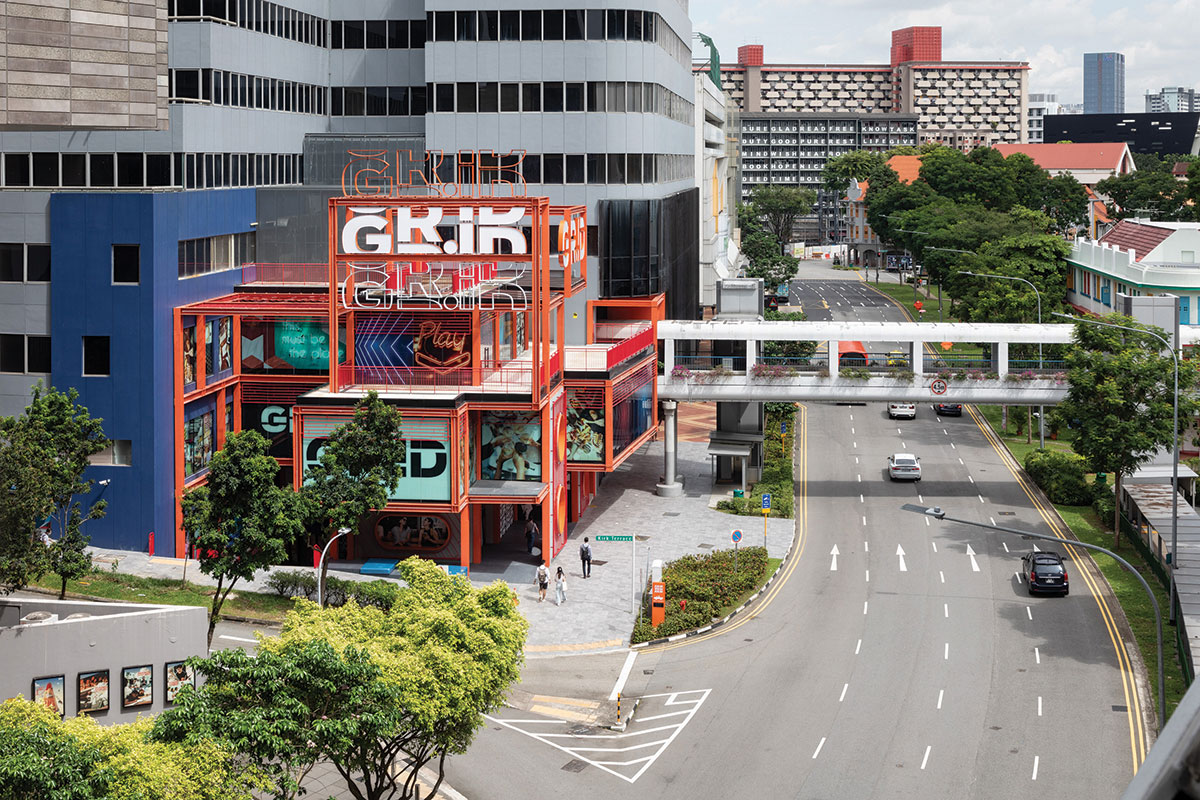
The metamorphosis of GRiD’s Street corner into a “beacon” and attractor and housing a high quantum of high revenue-generating F+B units is SPARK’s signature gesture and a cultural “nod” to the night-time luminosity of the local shophouses.
A new ‘social stair’, a vital component of the dynamic new corner, is located opposite SOTA, driving footfall to “food joints” in the basement. The stair is a place to relax with friends, watch onscreen shows or enjoy live performances by GRiD’s arts-focused tenants.
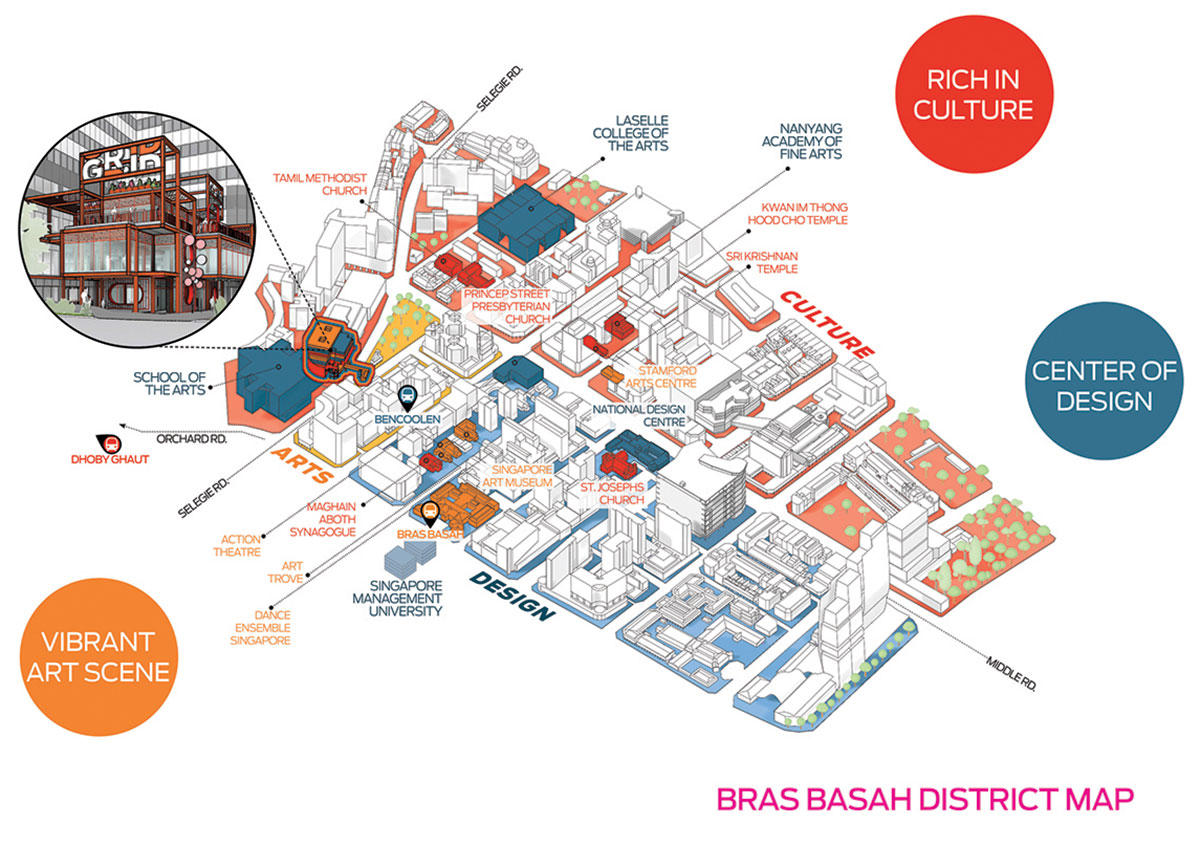
The corner shops and social stairs have become a vibrant digital generation-friendly “Instagrammer” canvas for content creators and experience seekers. The GRiD has been deliberately designed to stand out from its neighbours. The energy of the exterior is carried into the interior spaces, redolent of a post-industrial aesthetic with neon lights and supersized utilitarian graphics.
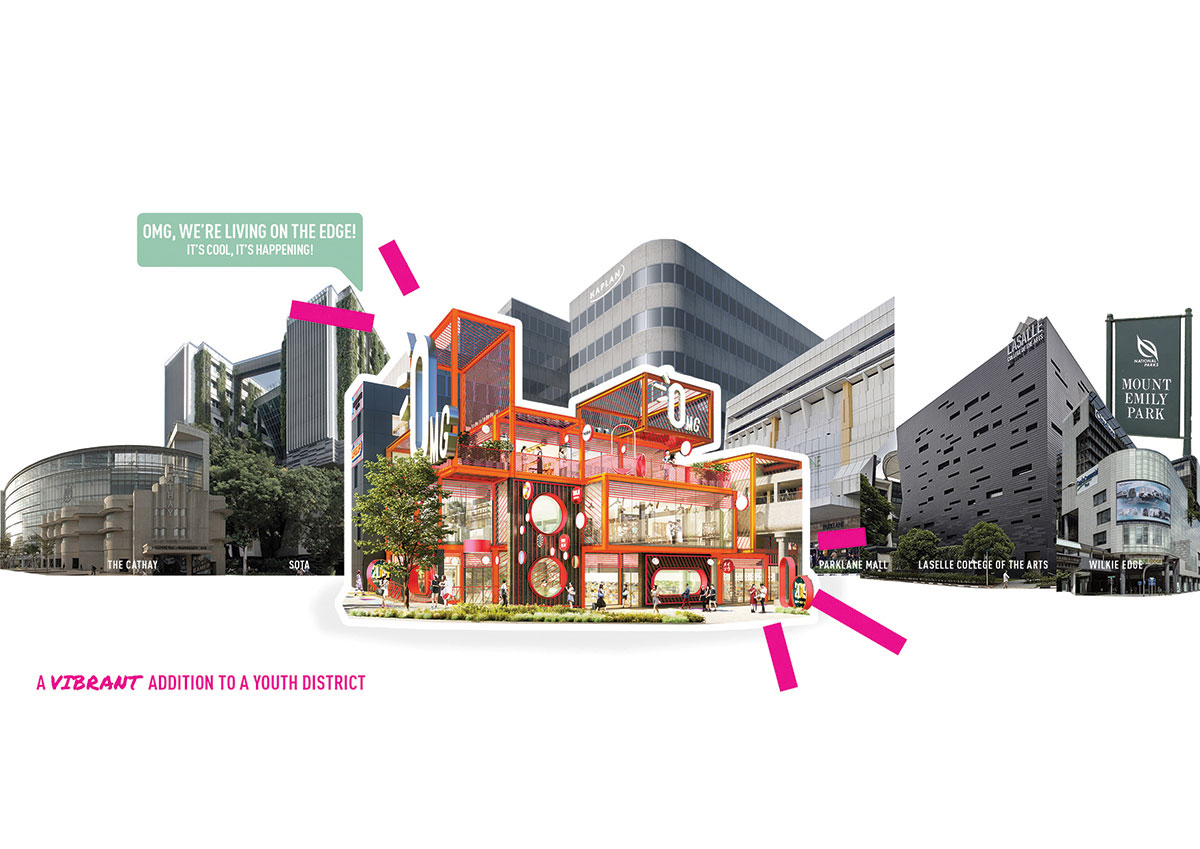
DESIGN DESCRIPTION
GRiD sits at the heart of Singapore’s Arts District, sandwiched between SOTA (School of the Arts) and 2 of Singapore’s older generation of shopping malls, Park Lane and Peace Centre. GRiD is an excellent example of a positive transformation of a failing building into a socially-focused youth retail and education hub for the community. The upgrading work is centred on increasing asset value through social interaction, improved accessibility and the celebration of self and society.

Key Elements
1.Transformation of Building Image
The primary gesture is transforming the building’s corner, key address and threshold to the street. The reenvisioned corner becomes the building “beacon”, an attractor, a vibrant digital generation friendly “Instagrammer” canvas for content creators and experience seekers.
The multilevel high rent ‘flagship’ corner is the result of moving low rental value shops from deep parts of the building interior to the easily accessible and high visibility street corner. The low-value shops were “voided” out to create visual and spatial connections from the ground floor into a double-volume gymnasium in the basement.
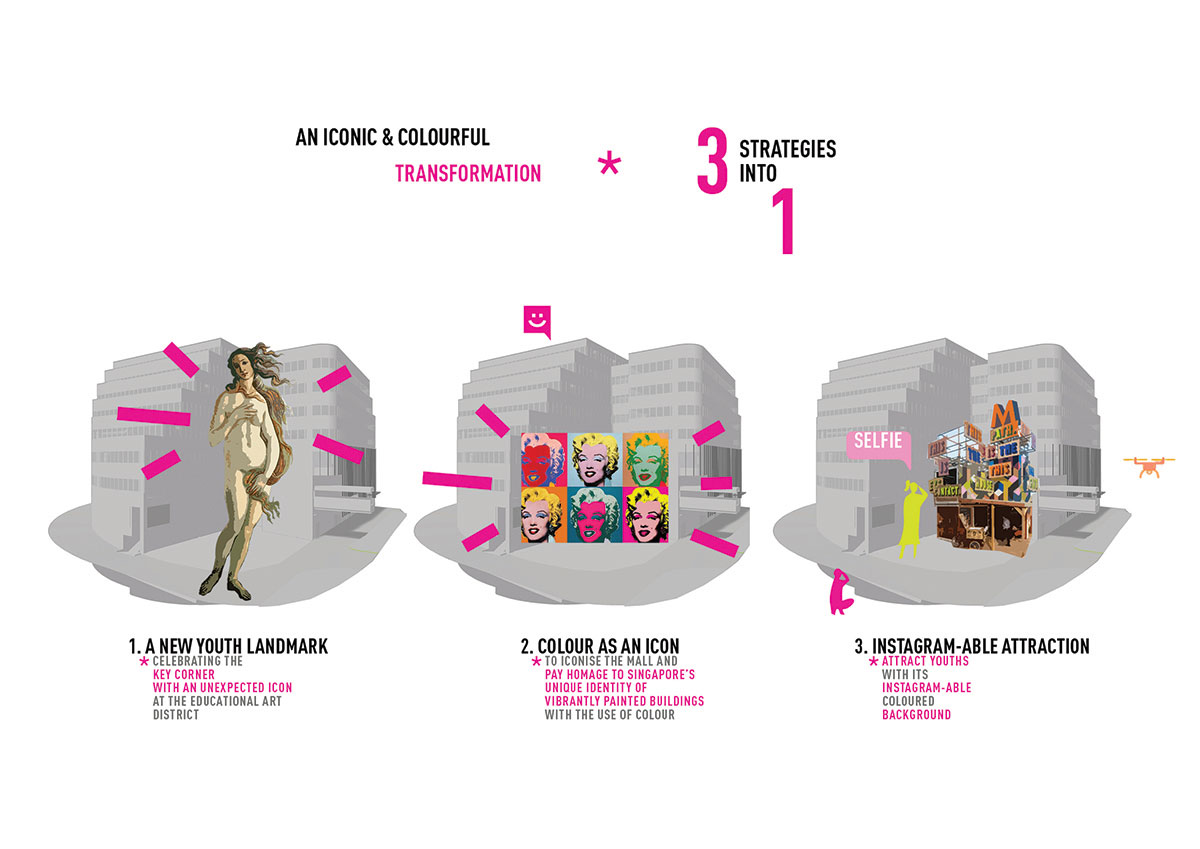
2.Programmatic mix to suit Client objectives
A high quantum of youth-focused “food joints” are located at the transformed corner, replacing an unproductive 4-storey void. The new corner facilitates great Al fresco dining spaces with terraces that increase visibility to and from the building and significantly underpin the notion of urban interaction.
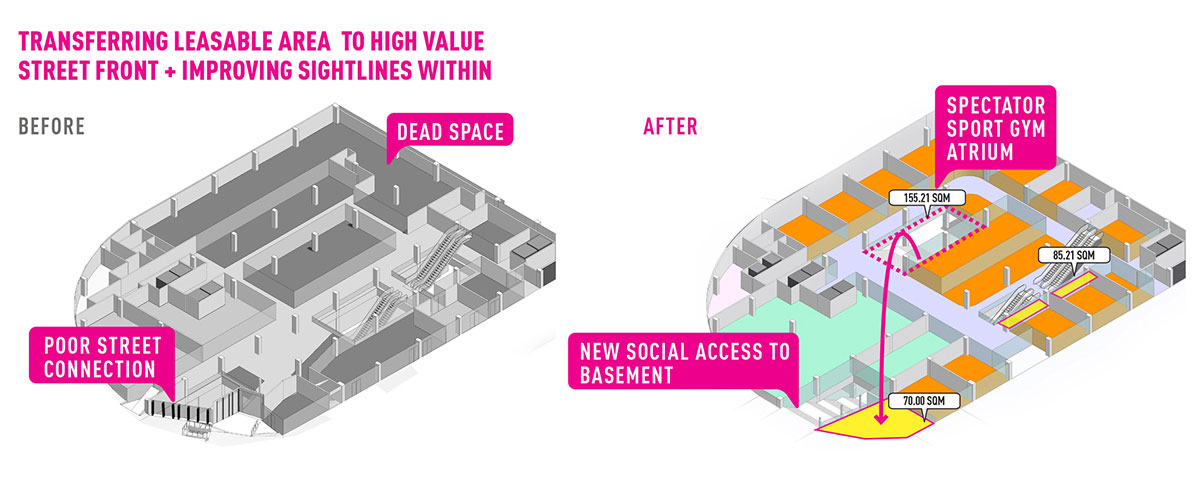
Critical facts on leasable area increase:
- Area at key corner threshold: 50%
- Area along street front: 35%
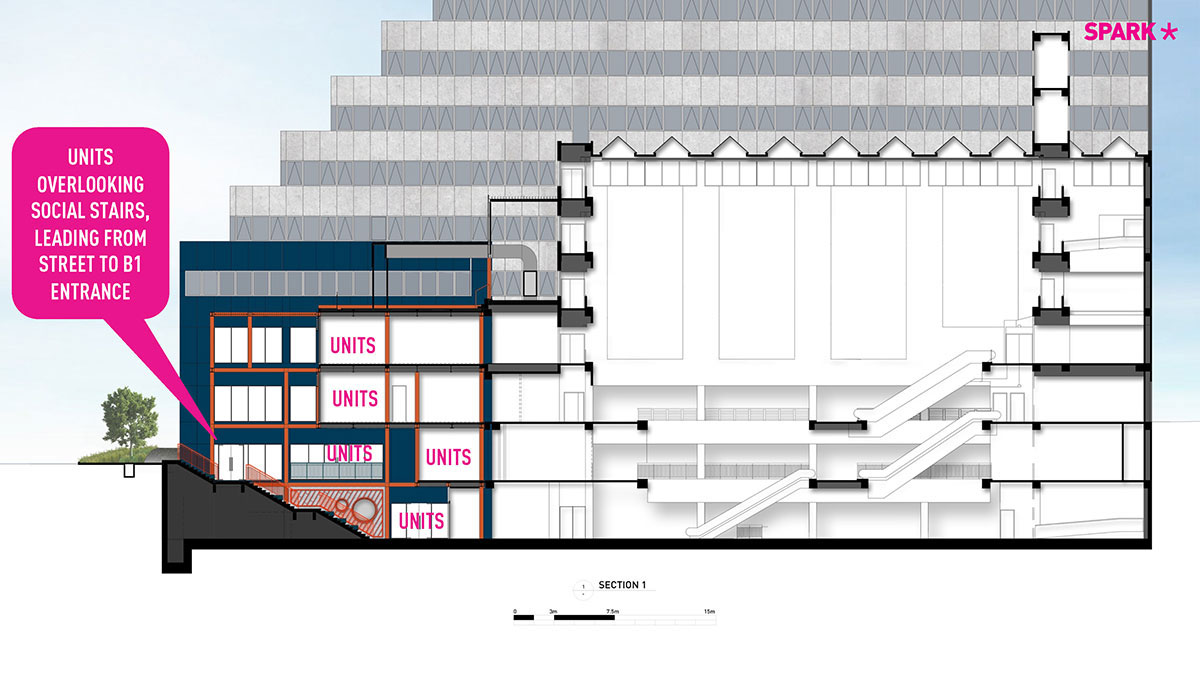
1.Social Stair
A new ‘social stair’ is introduced adjacent to the School of the Arts (SOTA), an essential part of the dynamic new corner and place to relax with friends on benches watching shows onscreen or live performances in a naturally ventilated triple volume space. The stair volume provides more façades for the restaurants. It creates a socially-focused addition to the arts district urban grain.
The social staircase provides direct access to the basement, food street, and other “attractor” facilities like the ‘social washroom’, public study & work zones, vending machines & lockers, all designed to transform utilitarian functions into social spaces.
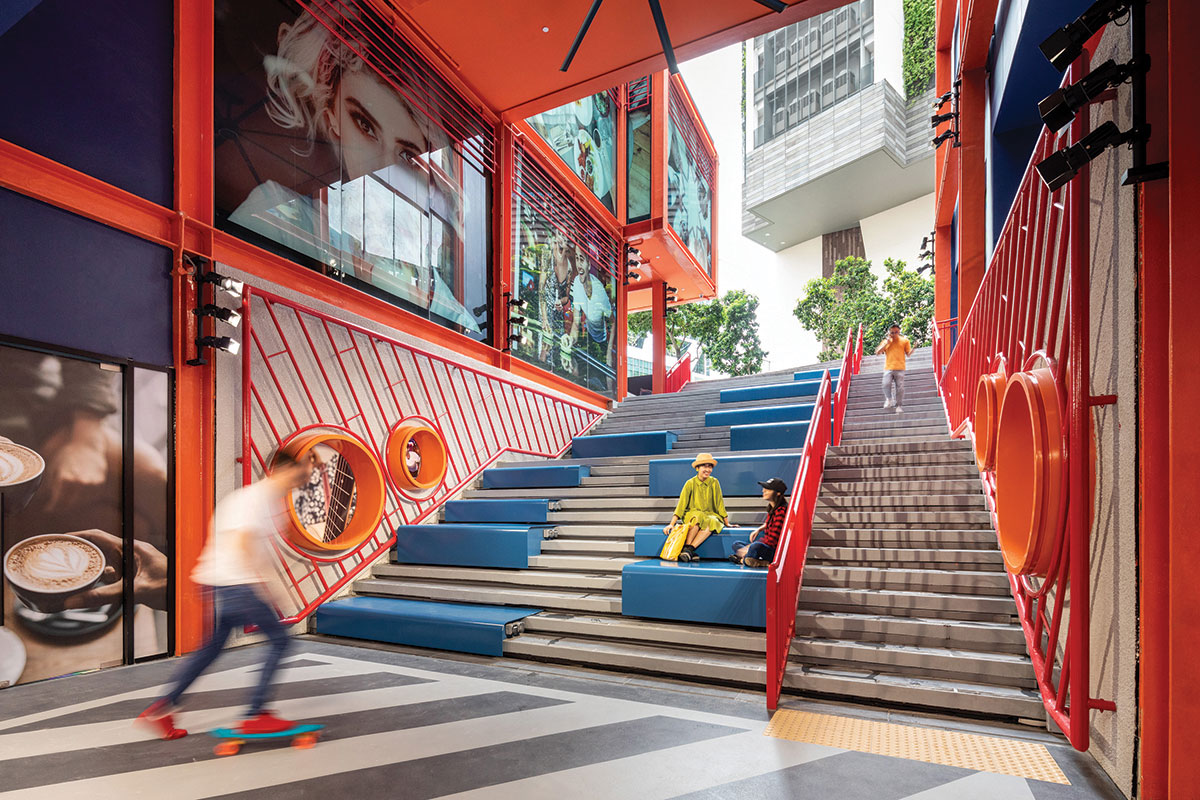
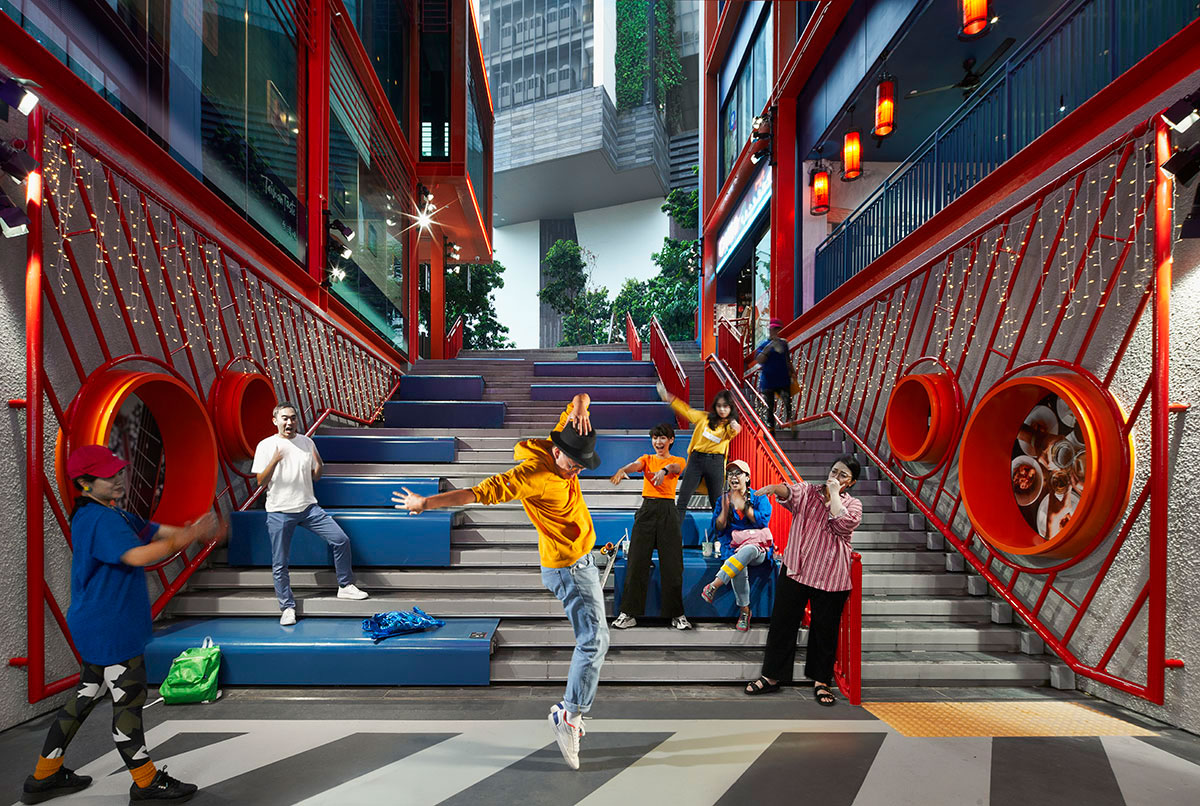
4. Social Washroom
The impact of mobile gadgets and social media on everyday life inspired SPARK’s design of utilitarian space into positive places for chance meetings, gossip sessions and image creation while taking a break between shopping, education or work. The social washroom’s bespoke post-industrial washbasin and WC cubicles are designed to be “photobooth” backdrops with super graphics which prompt fun and unexpected spontaneous selfies.
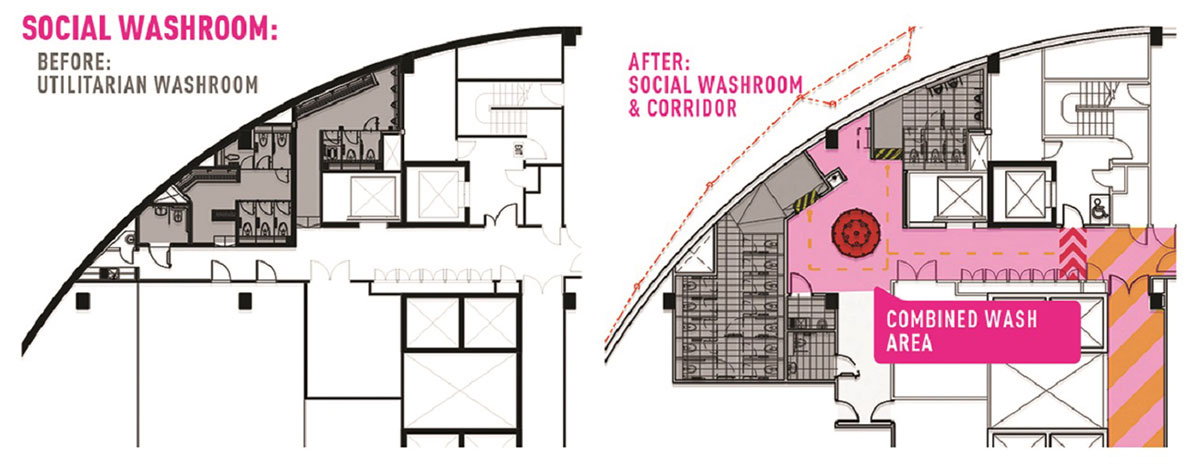
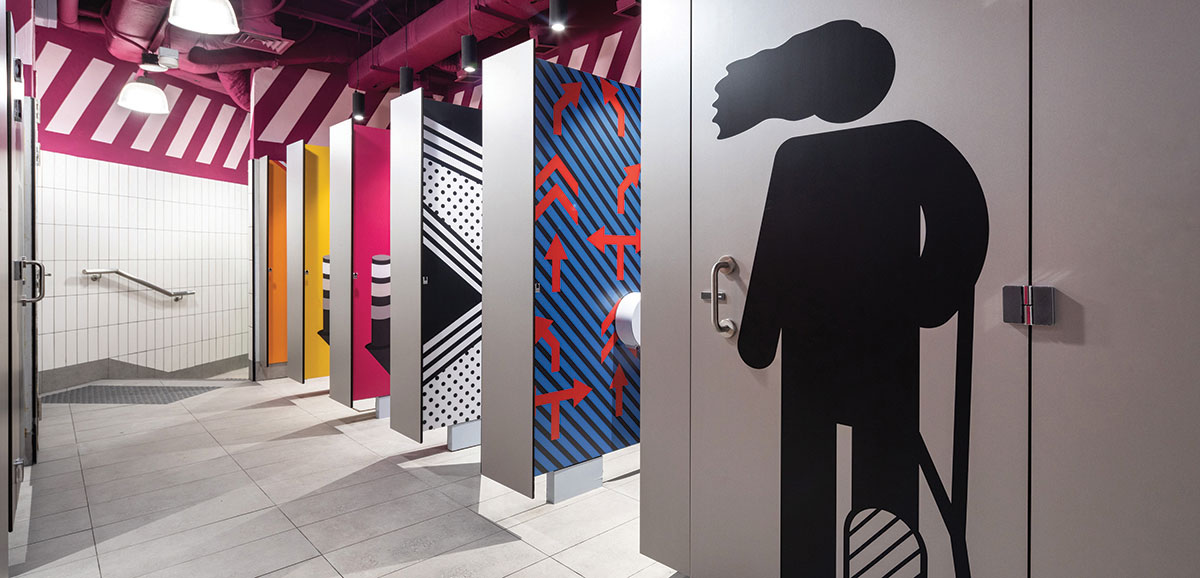
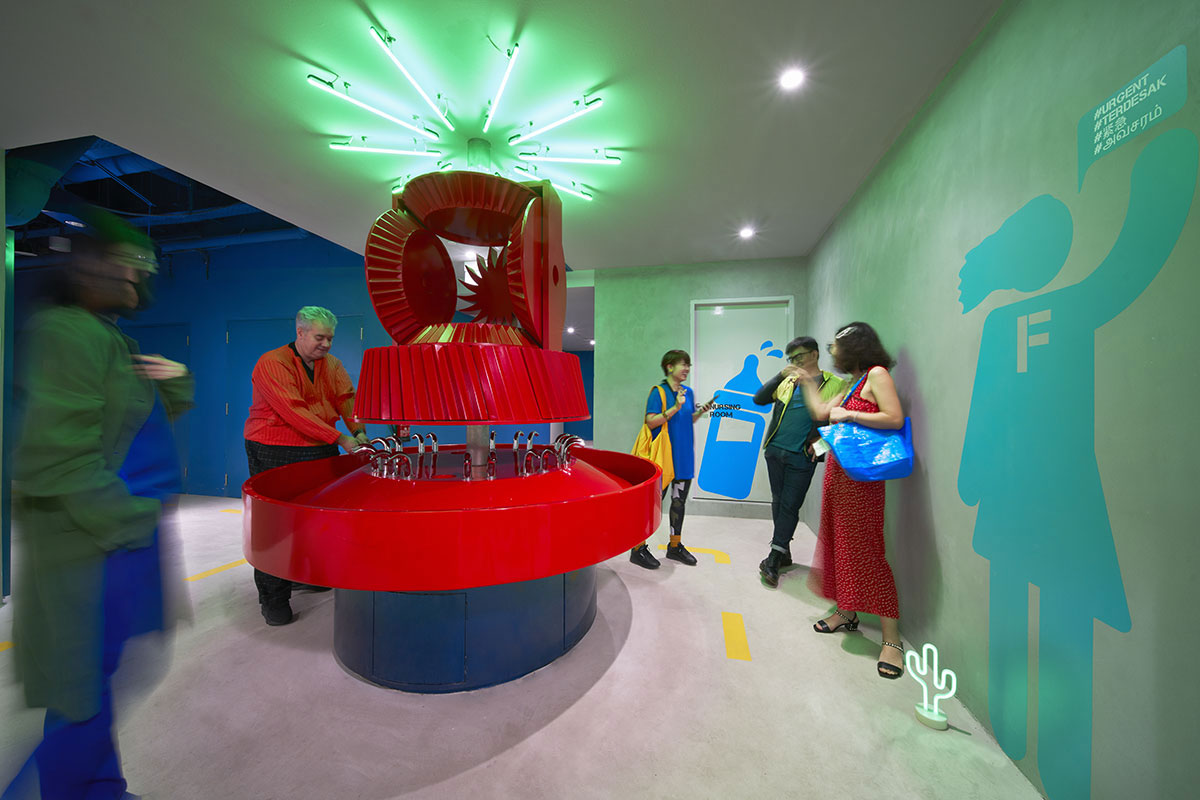
5. Branding Design. GRiD
The new corner restaurants and interior of GRiD are a favourable convergence of social spaces with multiple platforms for self-expression located at a city junction in a constant flux of people flow, vibrancy and energy. Here the building is graphically personalised with a slot machine style- jackpot GRiD Logo, the letter “i” representing “self”.
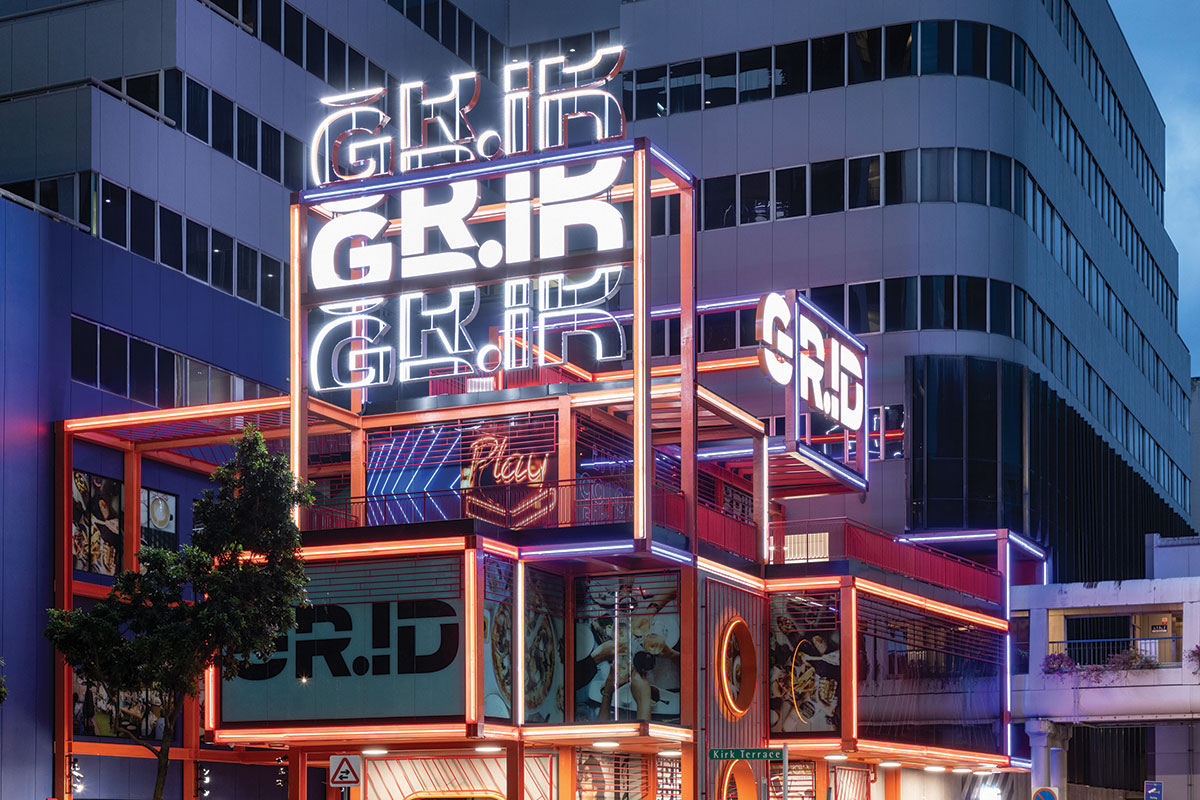
“GRiD” building and the brand name were developed by the design team and integrated into the design of the facade, entrances, wayfinding, and interior design.
The post-industrial material palette embodying the spirit of grunge, freestyle expression and arcade neon renders GRiD generationally different to its neutral neighbours, instead taking its colourful character from the vibrantly illuminated shophouses across the street.
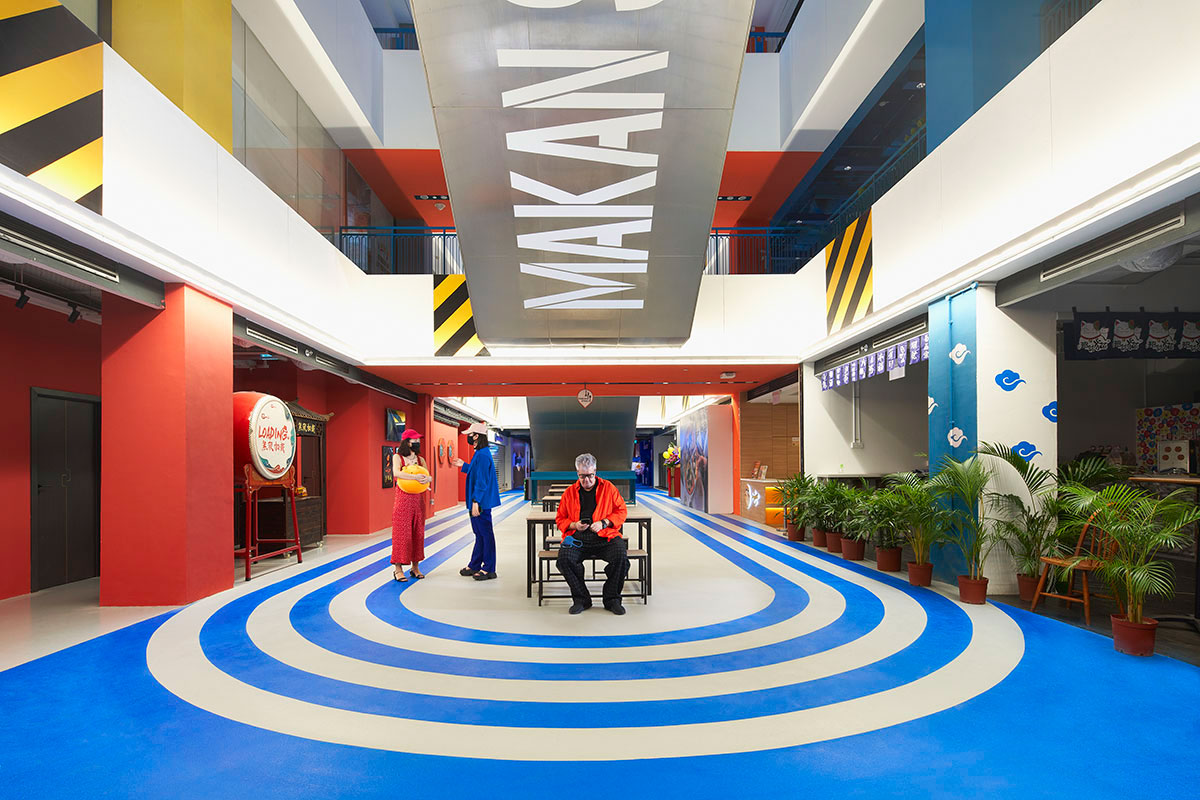
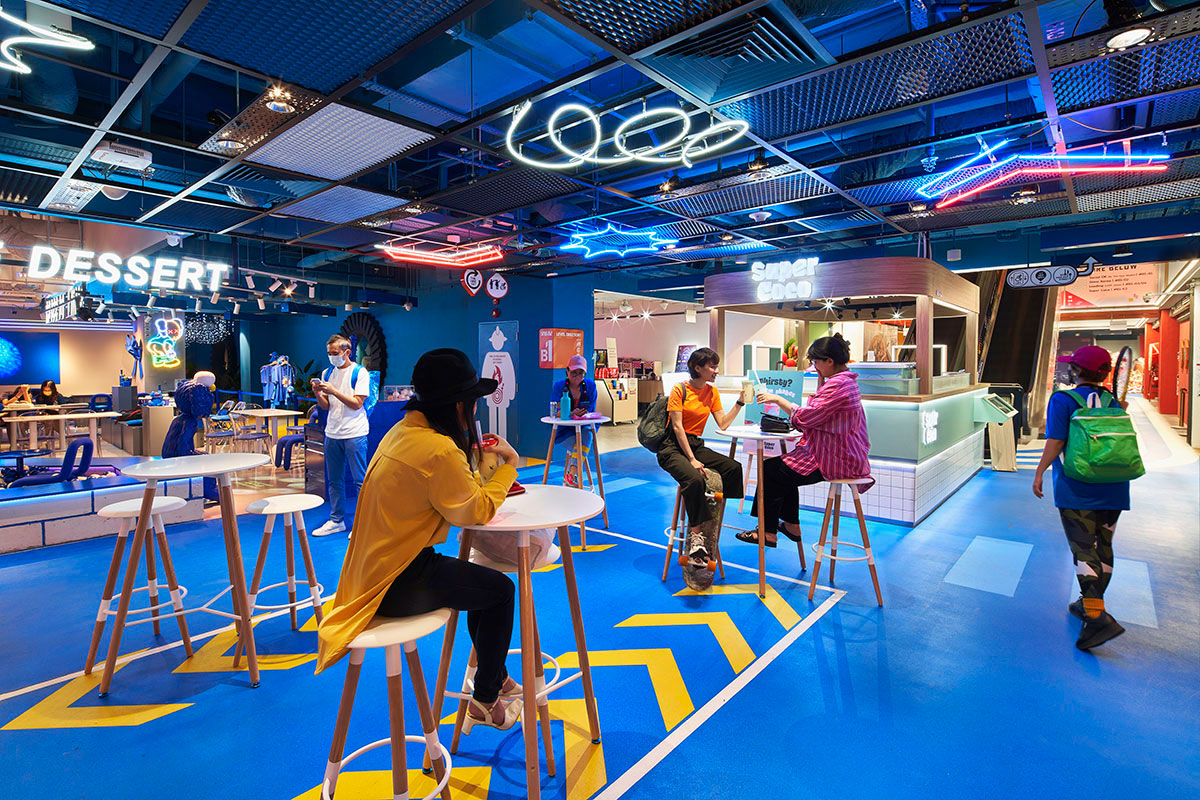
The supersized road marking graphics and neon logos are a real-life stage set of a flux of people and activities supported by GRiD’s urban theme. The urban graphic theme guides users around the building from the street to the basement and up through the escalator voids and lift lobbies to the restaurants, shops and education campus located at the building’s upper levels.
Pop-up stores, remote-working / study zones, and social shared spaces encourage communal events, public interaction and space sharing. Floor graphics and ceiling patterns incorporate abstract and supersized versions of street directional signage and road markings.
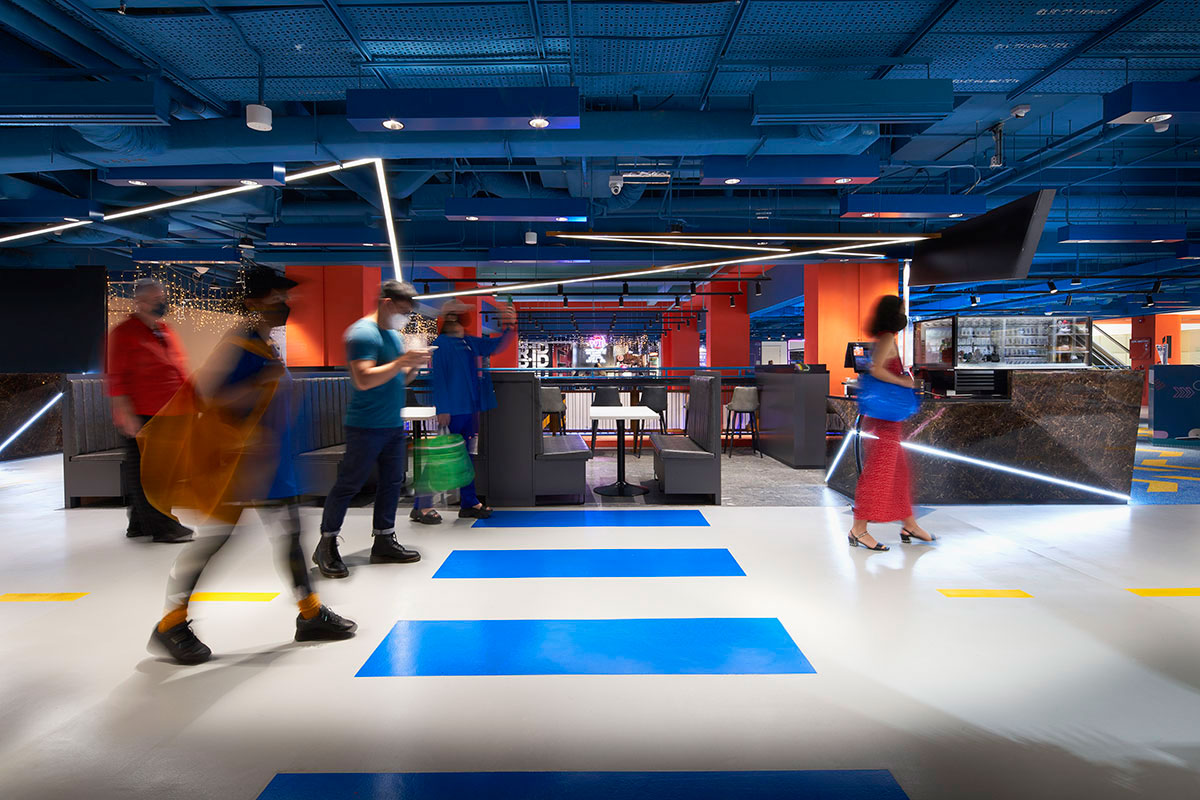
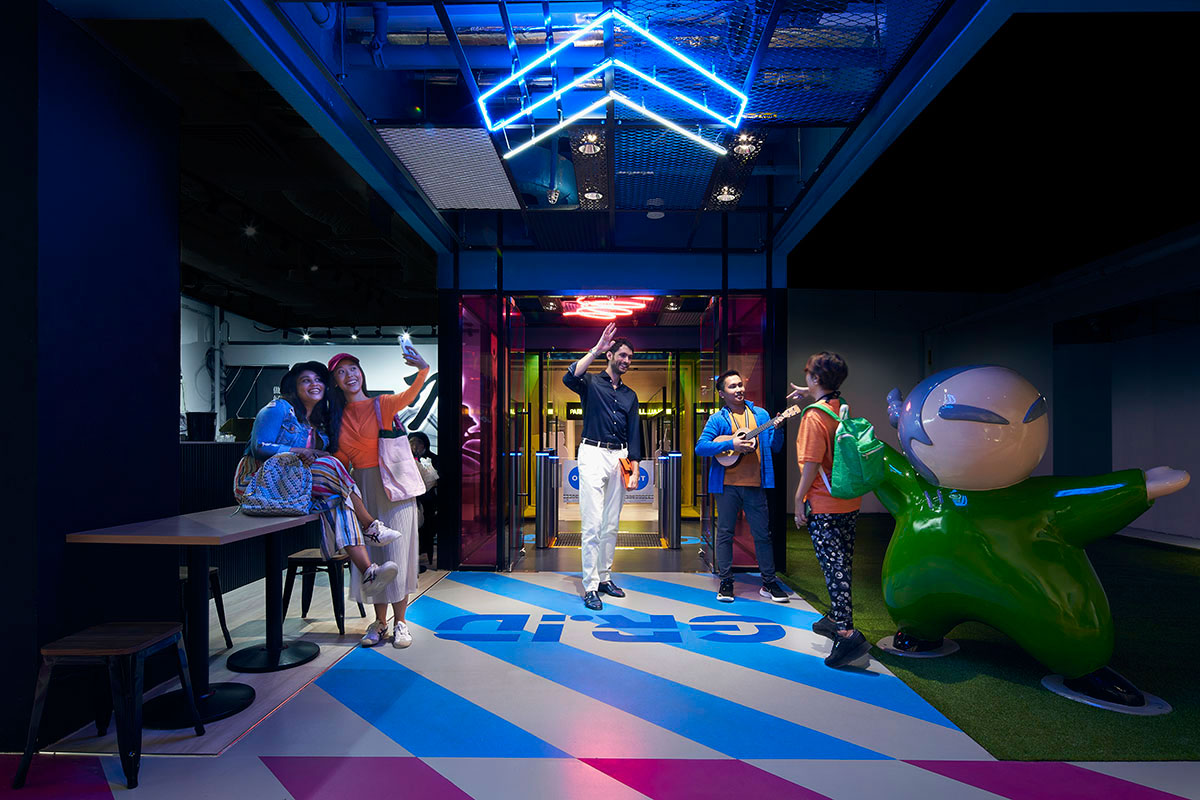
Ceiling directional signs guide visitors to necessary attractor social facilities and tenancy areas within GRiD. Graphic icons are designed for casual, youthful insouciance and motion. SPARK has transformed GRiD into a regenerated place to “be”. A learning campus, workplace, a place to socialise, shop, eat and connect with the local arts community.
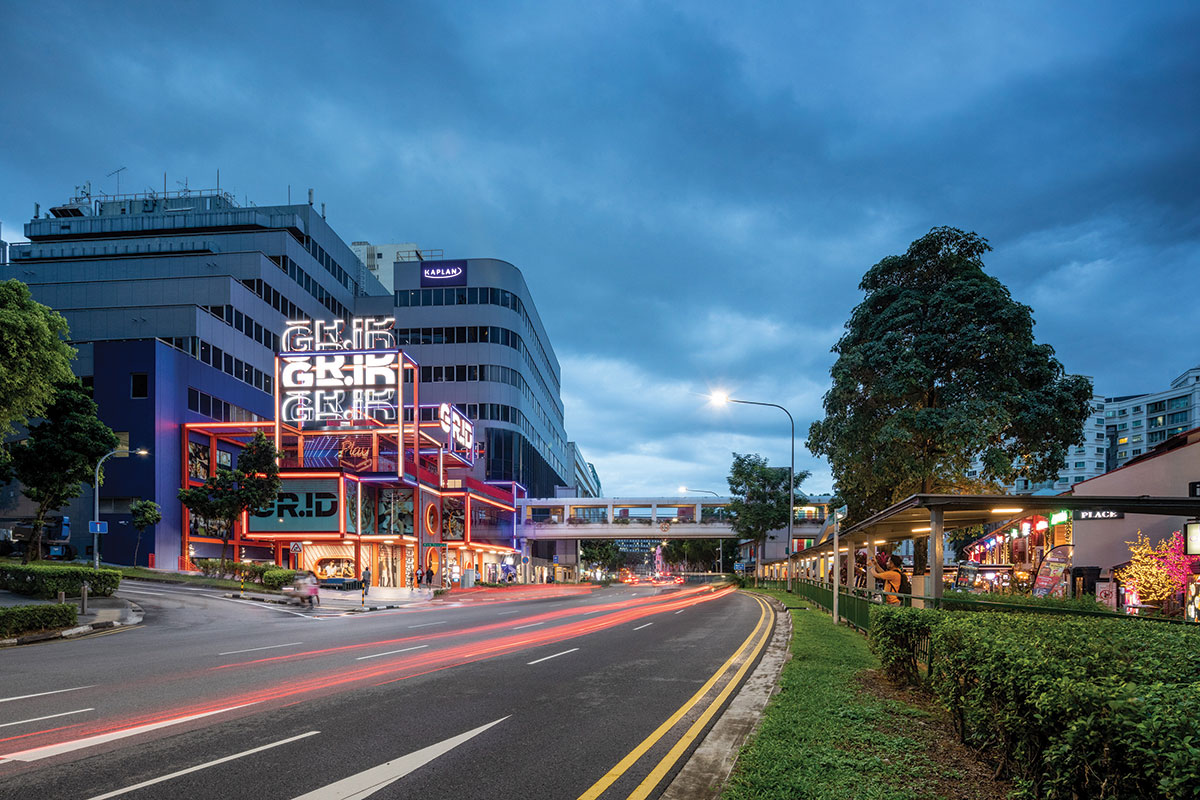
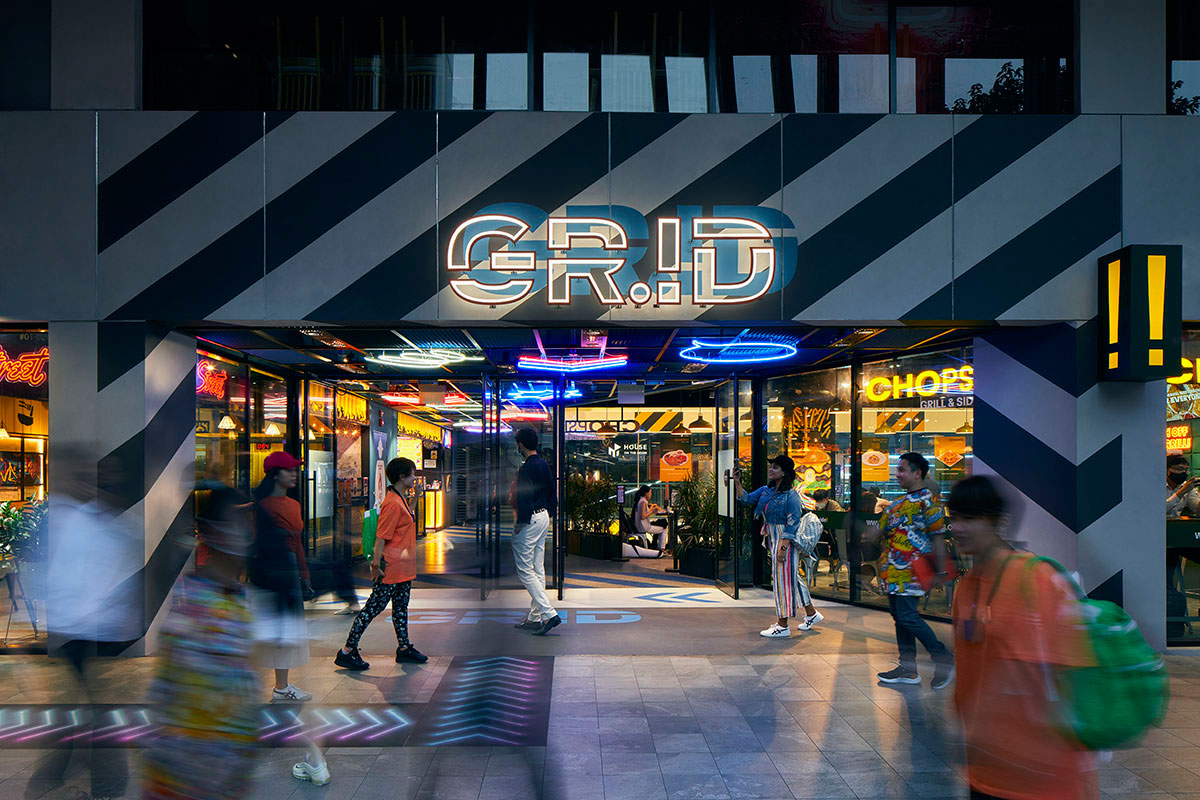
An outwardly looking destination that is social, experiential and an authentic “local” experience in an offbeat location.
